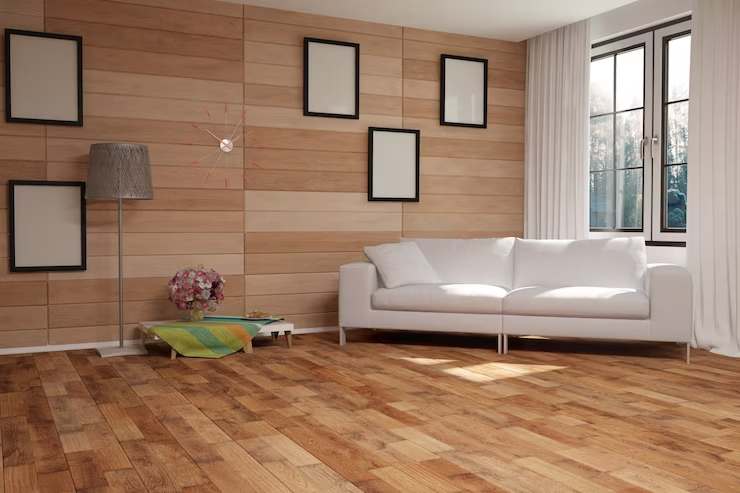In recent years, engineered wood flooring has emerged as a popular choice for homeowners in Canada. Its blend of aesthetic appeal, durability, and versatility makes it a preferred option for those looking to enhance the ambiance and value of their homes. However, selecting the perfect engineered wood flooring for your Canadian space requires careful consideration of various factors such as climate, style preferences, durability, and budget. In this comprehensive guide, We will delve into the key aspects to consider when choosing engineered wood flooring for your Canadian home, ensuring that you make an informed decision that aligns with your needs and preferences.
Understanding Engineered Wood Flooring:
Before delving into the selection process, it’s essential to understand what engineered wood flooring is and how it differs from traditional hardwood flooring. Engineered wood flooring is constructed using multiple layers of wood veneers that are bonded together with adhesives. The top layer, known as the wear layer, is made of high-quality hardwood veneer, providing the flooring with its distinctive appearance and texture. Beneath the wear layer, there are several layers of plywood or high-density fiberboard (HDF), which serve as the core of the flooring.
This layered construction gives engineered wood flooring several advantages over solid hardwood flooring. Firstly, it is more dimensionally stable, meaning it is less susceptible to expansion and contraction due to changes in humidity and temperature. This makes engineered wood flooring suitable for installation in areas with fluctuating moisture levels, such as basements and bathrooms. Additionally, engineered wood flooring is often more cost-effective than solid hardwood flooring, making it an attractive option for budget-conscious homeowners.
Climate Considerations:
One of the most critical factors to consider when selecting engineered wood flooring for your Canadian space is the local climate. Canada is known for its diverse climate, ranging from cold and dry winters to warm and humid summers. These fluctuations in temperature and humidity can significantly impact the performance and longevity of your flooring.
For regions with harsh winters and dry indoor environments, such as Alberta and Saskatchewan, it’s essential to choose engineered wood flooring with excellent dimensional stability and moisture resistance. Look for products with a thick wear layer and a stable core material, such as high-quality plywood or HDF. Additionally, consider opting for engineered wood flooring with built-in moisture barriers or coatings to protect against moisture penetration.
In contrast, in regions with high humidity levels, such as coastal areas like British Columbia and the Maritime provinces, it’s crucial to select engineered wood flooring that can withstand moisture and humidity without warping or cupping. Look for products with moisture-resistant finishes and cores, As well as proper installation techniques, such as acclimation and moisture testing.
Style and Aesthetic Preferences:
Another essential aspect of selecting engineered wood flooring is considering your style and aesthetic preferences. Engineered wood flooring comes in a wide range of species, finishes, and textures, allowing you to achieve the desired look and feel for your space.
For a classic and timeless look, consider opting for traditional hardwood species such as oak, maple, or hickory. These species feature natural variations in grain and color, adding warmth and character to any room. Alternatively, for a more modern and contemporary aesthetic, you may opt for exotic hardwood species such as Brazilian cherry or teak, which offer unique grain patterns and rich hues.
In addition to species selection, consider the finish and texture of the engineered wood flooring. Choose between matte, satin, or glossy finishes depending on your desired level of sheen and reflectivity. Similarly, consider the texture of the flooring, whether you prefer smooth and refined surfaces or distressed and hand-scraped textures that add rustic charm and character.
Durability and Maintenance:
Durability is a crucial consideration when selecting engineered wood flooring, especially in high-traffic areas such as living rooms, kitchens, and hallways. Look for products with a high Abrasion Class (AC) rating, indicating their resistance to wear and tear. Additionally, consider the thickness of the wear layer, with thicker wear layers providing better protection against scratches, dents, and stains.
Furthermore, consider the maintenance requirements of the engineered wood flooring. While engineered wood flooring is generally easier to maintain than solid hardwood flooring, it still requires regular cleaning and maintenance to preserve its beauty and longevity. Opt for products with low-maintenance finishes and coatings that resist stains, spills, and scratches. Additionally, follow manufacturer recommendations for cleaning and maintenance, avoiding harsh chemicals and abrasive cleaners that can damage the flooring.
Budget and Cost Considerations:
Finally, consider your budget and cost considerations when selecting engineered wood flooring for your Canadian space. While engineered wood flooring is often more affordable than solid hardwood flooring, prices can vary depending on factors such as species, finish, thickness, and brand.
Set a realistic budget based on your financial constraints and priorities, taking into account not only the cost of the flooring materials but also installation, underlayment, and any additional accessories or services required. Compare prices from multiple suppliers and retailers to ensure you’re getting the best value for your money without compromising on quality.
Additionally, consider the long-term investment value of the engineered wood flooring. While it may be tempting to opt for the cheapest option available, investing in higher-quality flooring with better durability and performance can save you money in the long run by reducing the need for repairs, replacements, and maintenance.
Conclusion:
Selecting the perfect engineered wood flooring for your Canadian space requires careful consideration of various factors, including climate, style preferences, durability, and budget. By understanding the unique characteristics and advantages of engineered wood flooring and taking these factors into account, you can make an informed decision that enhances the beauty, comfort, and value of your home for years to come. Whether you’re renovating your existing space or building a new home, engineered wood flooring offers a versatile and stylish flooring solution that meets the diverse needs and preferences of Canadian homeowners.


